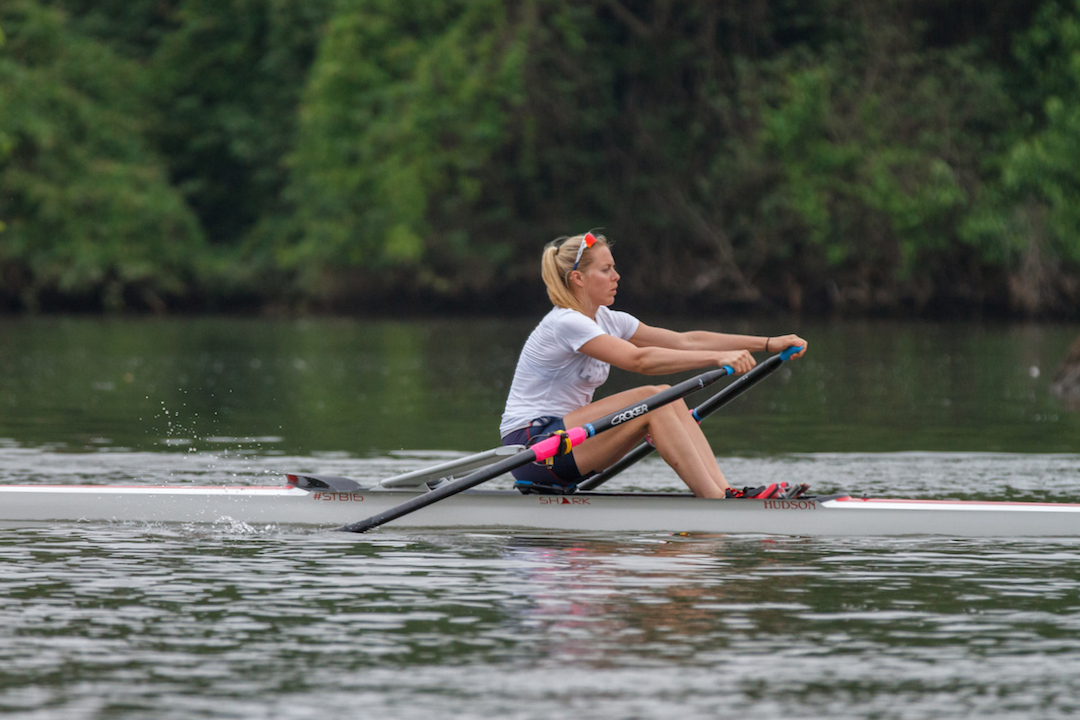No Fade for the Kiwis: Even-Splitting is the New Black
 |
| 2012 Kiwi men's double (Photo: B. Kitch) |
If you're at all into rowing boats, then you're already well aware of the Kiwi Pair. The duo of Hamish Bond and Eric Murray has been unbeaten since they switched from the men's four to the pair before the 2009 season, and left the rest of the field behind. Not only have they been unbeatable on the water, but their erg(o) records speak for the themselves as well. And yet, they're always in fifth place 500 meters into the race. (See below.)
Men's Pair Final
Why is that? The answer is obvious enough: It's because they row even splits down the course. So while the rest of the field fades in the second and third quarters, Bond and Murray are still rowing just as fast as they were at the beginning of the race. It's not complicated. They haven't reinvented the wheel. But what they have done is execute a training plan and a race strategy more consistently, and better, than anyone else in the history of international rowing as we know it. (That's not an opinion—they have the longest unbeaten streak of any elite crew to date, having surpassed Ekaterina Karsten's mark of 15 international victories last year in Chungju.) Which does ask the question, if you are racing the Kiwi Pair, and you're up by a length at the 500, what were you thinking?
Men's Single Final
The predominant international (and collegiate, and junior, for that matter) race pattern has long been based loosely on the idea of getting ahead, and staying ahead. But that's not the most efficient way to do go about it, and it has always seemed more about psychological advantage than it has seemed physiologically sound. What Dick Tonks and the Kiwis have done over the past few years is to look at the variation in speed over the course in small boats (capable of much more significant and rapid speed changes than eights), and tried their best to eliminate it. And, with very few exceptions, the strategy has paid major dividends, as the results show.
Lightweight Men's Four Final
As a rowing fan, it some cases it works so well that it can even remove some of the drama. Even rookie commentators aren't going to be fooled by racecourse parallax when the distance between first and second is the curvature of the earth. (That's not a comment on the announcers in the included videos, mind you—Greg Searle and Martin Cross are two of the most experienced oarsmen in the world—but you know what I'm saying.) At the London Olympics, the Kiwi Pair made an Olympic Final—an Olympic Final—all but a foregone conclusion by absolutely blowing the doors off in the heat, setting a new world best time in the event that is faster than that in the double. And now, based on the race below, New Zealand look like they might be very well positioned to challenge for the women's pair in Rio as well.
Women's Pair Final
When will the rest of the world catch on, and catch up? Only time will tell. The New Zealand Rowing system is firing on all cylinders, and the training plan perfectly complements the race plan right now. And, there are already other federations and crews applying the same tactics and strategy—take a look at the GB men's quad, for example. In the big boats, the approach of racing to an early lead has been and continues to be an effective one—it would take more research, but this may be an indication of reaching a faster, sustainable base-speed earlier, rather than a case of sprinting to the 500. (Also, as we've seen in the U.S. of late, both Ohio State and Washington won national titles with relatively flat race profiles—in fact, Washington negative-split their way to victory at the Pac-12 Championships.)
While Lucerne is often look at as a touchstone for performance at the world championships, it's not always a great predictor. As Searle and Cross point out in the LM4- video above, you never know where people are in their respective training cycles, and Amsterdam may be a whole different ballgame (shell game?). However, like their race plan, we don't see any signs of the Kiwis slowing down on the Bosbaan.
Here's a link to complete results from Lucerne.
-Bryan

